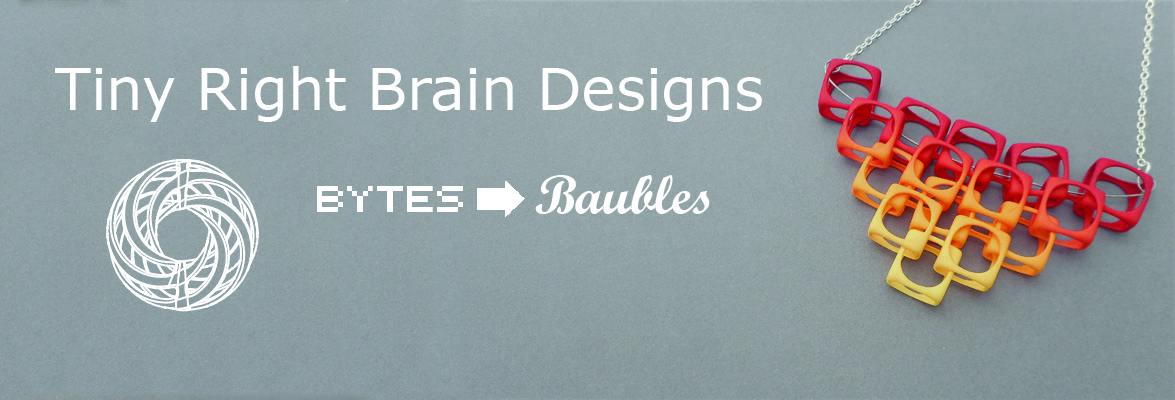I lot of folks comment on how “math-y” some of my designs look, so I thought I should write a bit about how math plays a part in some of my designs. Let’s start off with my most popular design, the “twisted torus pendant”. This particular design has been manufactured in different sizes and materials and as both a pendant and earrings.
I designed this using Blender software, which can easily generate the ever popular torus surface. A plain torus would be boring jewelry so I do 3D modeling to carve out the bits of negative space and create the swirl that makes this an interesting jewelry piece.
Next, we have these earrings which are based on Enneper’s minimal surface. Blender allows the input of math equations to generate the surface for me. After that, I use 3D modelling to change it up and give it the look I want for jewelry.
This is pendant is based on Bour’s minimal surface. Again, I can input an equation into Blender, but in this case I think I’ve modified it enough that I don’t know that it is easily recognizable as Bour’s.
The mobius strip is a very popular theme in the 3D printing world, so I also have my own rendition in this pendant. I believe Blender can generate the mobius surface for me, but in this case I did it entirely by 3D modelling.
These next pair of earrings are based on the batwing surface. I modeled my version in Blender so I’m sure it’s not mathematically correct but it definitely has the batwing look, albeit not as pointy.
Some of my designs are just modeled to resemble some sort of minimal surface, but I’m not sure if they are anything that exists mathematically. An example would be these earrings that have lots of holes in interesting places.
Finally, here’s a version of Borromean rings that’s not the standard look of three interlocking rings that you see in a lot of logos.







